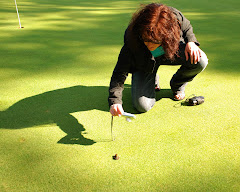 I recently came across a 1985 essay by Salman Rushdie about an unlikely pairing of a New York artist and an Indian English teacher who briefly influenced each other.
I recently came across a 1985 essay by Salman Rushdie about an unlikely pairing of a New York artist and an Indian English teacher who briefly influenced each other.Harold Shapinsky, an Abstract Expressionist painter from New York, lived, painted, and died in relative obscurity. Compared to Jackson Pollock and Willem de Kooning in terms of style not popularity, he lived for his art, but never tried to garner attention (and therefore sales) by the New York art scene. He had a brief revival in the mid-80s and had a one-man show at the Mayor Gallery in London, thanks to Akumal Ramachander, an elementary English teacher in Bangalore, India who stumbled on his work and took it upon himself to share it with the world.
Ramachander explained what drew him to Shapinsky’s work in Rushdie's 1985 essay: “The answer, it seems, is…butterflies: ‘My art school was a small field near my house. I would spend quite a long time there, chasing butterflies. Hundreds of thousands of them, you know, in all their brilliant hues. I would never destroy a butterfly, just chase them and wonder at that great profusion of colors. And I think all that colour sank into me…all those permutations and combinations, they were already there in me. All that had to happen was to get someone’s work, and see if I could get back all the colours I saw in my childhood. And Shapinsky seemed to come very close to that.’”
The Shapinsky revival was short-lived. He sank back into obscurity and died of Alzheimer’s 20 years later.
[For more on Shapinsky, here's his 2004 obit in the New York Sun.]

No comments:
Post a Comment